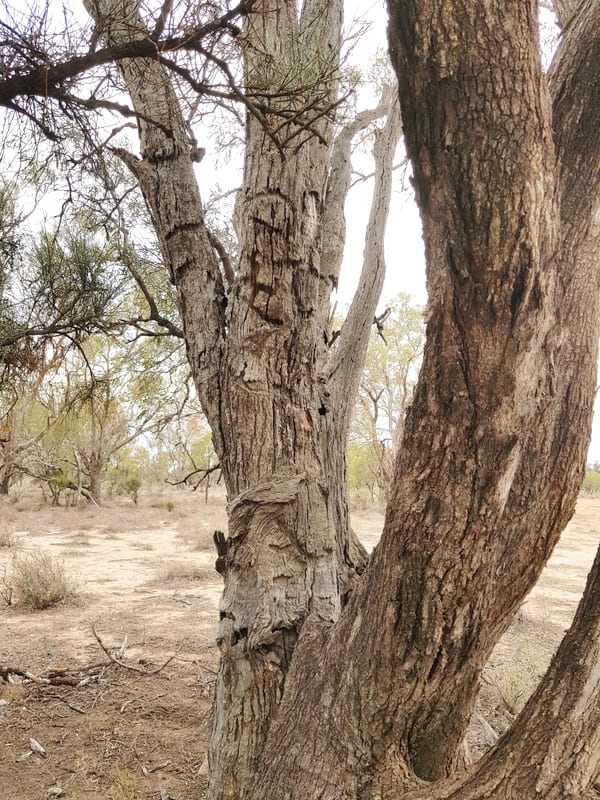As the drought digs its feet in and any predicted rain evaporates from the forecasts before it hits the ground, the scartrees endure. Some trees have been trashed in wild wind squalls but the significant widespread erosion is exposing many old campsites and artefacts as well. The scalded flats are being peeled back as topsoil is blown away leaving hollows littered with the flakes and fragments of foreign stone. There is no natural rock here so the variety and quantity of the different chips & chunks of stone is remarkable. The trees in these areas are always heavily scarred and the clay oven balls are scattered around like red mushrooms in some apocalyptic film set. The remains of the earth ovens now emerging from the clay pans is a reminder of how long this land has been home to Aboriginal Australians. Luckily the carved tree is surviving this mother of all droughts, decaying gracefully but gradually becoming less decipherable every year. To the shame of our archaeologists, anthropologists, aboriginal advisory bodies, academics & activists, none of whom have shown any interest or enthusiasm towards these astonishing trees. Like how many living Aboriginal carved trees do we have in this country? Those from Collymongle ( Collarenebri, NSW ) were enhanced with steel tomahawks early last century and many carted off to city museums. There may be a few burial trees surviving in Wiradjuri country so let’s hope someone is looking after them… what price our heritage … going, going, gone
January 7, 2019

